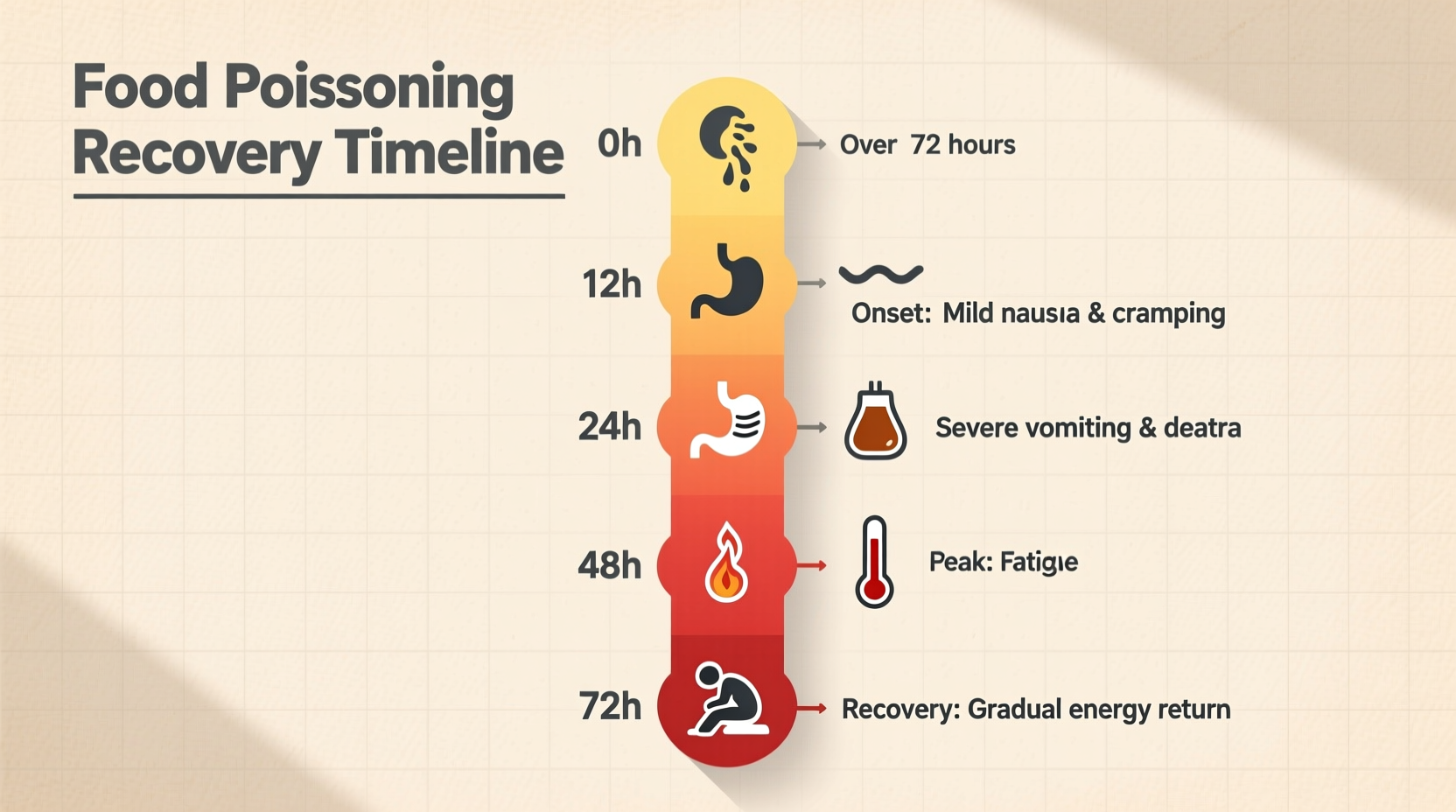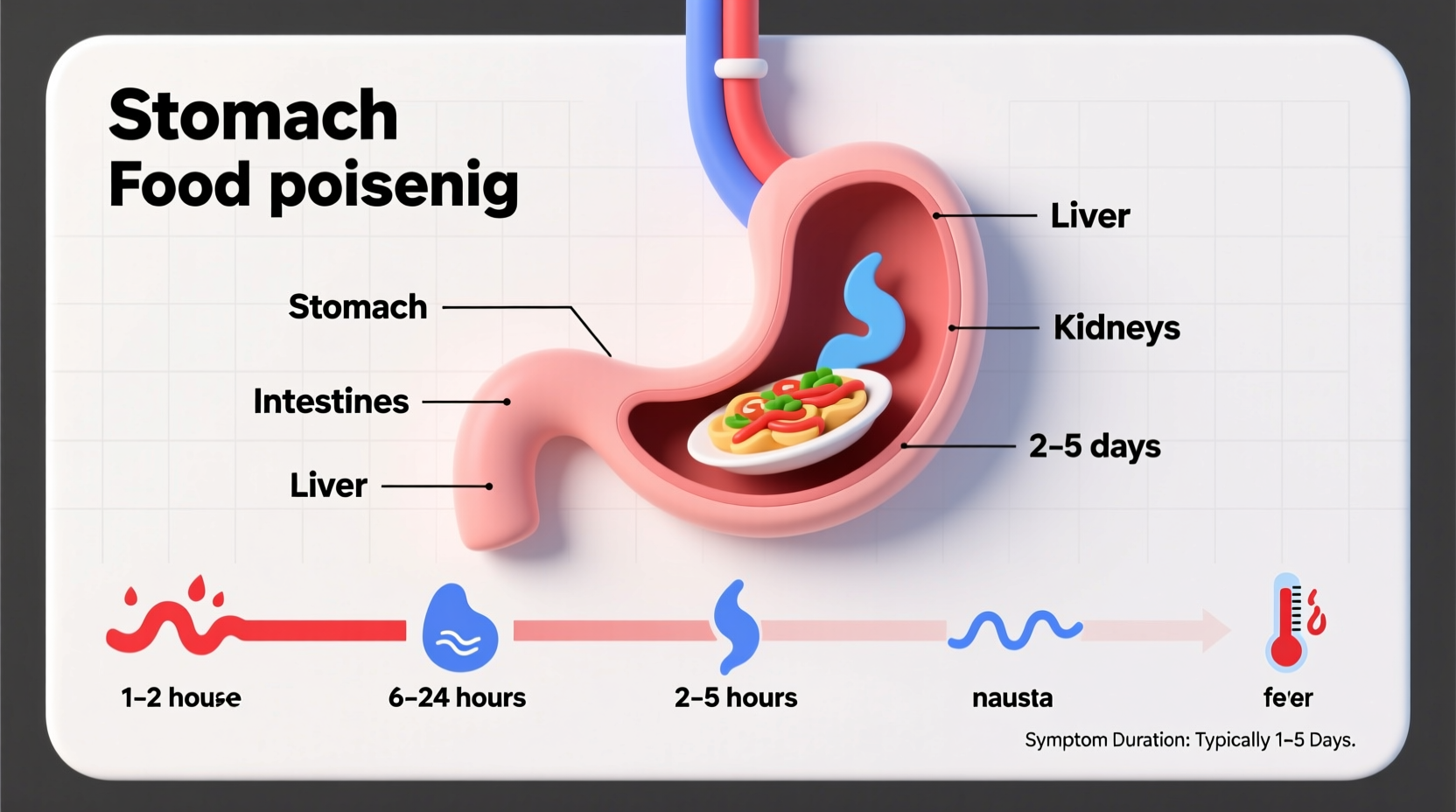When your stomach starts churning and you're making frequent trips to the bathroom, your immediate question is likely: how long does food poisoning last? Understanding the timeline of your symptoms can help you manage recovery and know when to seek medical attention.
Understanding Food Poisoning Duration by Pathogen Type
The duration of food poisoning depends primarily on the specific bacteria, virus, or parasite causing your illness. Here's a breakdown of common pathogens and their typical symptom duration according to the Centers for Disease Control and Prevention:
| Pathogen | Onset Time | Typical Duration | Common Sources |
|---|---|---|---|
| Norovirus | 12-48 hours | 1-3 days | Raw shellfish, ready-to-eat foods, contaminated water |
| Salmonella | 6 hours-6 days | 4-7 days | Raw eggs, poultry, meat, unpasteurized dairy |
| E. coli (STEC) | 3-4 days | 5-10 days | Undercooked ground beef, raw produce, unpasteurized milk |
| Listeria | 1-4 weeks | 1-3 weeks | Ready-to-eat deli meats, soft cheeses, refrigerated pâtés |
| Campylobacter | 2-5 days | 2-10 days | Raw or undercooked poultry, unpasteurized milk |
Key Factors That Influence Your Recovery Time
While the pathogen type is the primary determinant, several other factors affect how long food poisoning symptoms last for you specifically:
- Your immune system strength - People with compromised immunity may experience longer illness duration
- Age - Infants, young children, and adults over 65 often have more prolonged symptoms
- Hydration status - Proper fluid replacement can shorten recovery time
- Amount of contaminated food consumed - Larger exposures often lead to more severe, longer-lasting symptoms
- Pre-existing health conditions - Conditions like diabetes or kidney disease can prolong recovery

Typical Food Poisoning Recovery Timeline
Understanding the progression of symptoms can help you gauge whether your food poisoning duration is following a normal pattern:
Day 1: Onset and Peak Symptoms
Symptoms typically begin 6-24 hours after exposure, with nausea, vomiting, and diarrhea becoming most intense. This is when you'll likely feel worst, with possible fever and abdominal cramps. Most people remain bedridden during this phase.
Day 2: Gradual Improvement
Vomiting usually subsides, though diarrhea may continue. Energy levels remain low, and you may experience mild dehydration. This is when proper hydration becomes critical for shortening your food poisoning recovery time.
Day 3-4: Recovery Phase
Most people experience significant improvement by day 3, with symptoms becoming intermittent rather than constant. Bowel movements normalize, and energy gradually returns. Complete recovery typically occurs within 48-72 hours for most common pathogens.
When Recovery Takes Longer Than Expected
If your symptoms persist beyond 3 days, you may be dealing with a more serious pathogen like E. coli or Listeria. Certain populations face higher risks of prolonged illness:
- Pregnant women (especially vulnerable to Listeria)
- Older adults (over 65)
- Young children (under 5)
- People with weakened immune systems
When to Seek Medical Attention Immediately
While most cases resolve without medical intervention, certain symptoms indicate you should seek help immediately according to the Mayo Clinic:
- Diarrhea lasting more than 3 days
- Severe dehydration symptoms (extreme thirst, dry mouth, little or no urination)
- Signs of neurological problems (blurred vision, muscle weakness, tingling)
- Blood in stool or vomit
- High fever (above 101.5°F or 38.6°C)
- Symptoms lasting longer than a week
Speeding Up Your Recovery: Practical Steps
While you can't eliminate food poisoning overnight, these evidence-based strategies can help shorten your food poisoning duration:
Hydration Is Critical
Replace fluids with oral rehydration solutions, clear broths, or electrolyte drinks. Sip small amounts frequently rather than drinking large quantities at once, which may trigger more vomiting.
Foods That Aid Recovery
Follow the BRAT diet (bananas, rice, applesauce, toast) once you can tolerate solid foods. These bland, low-fiber foods help firm stools. Avoid dairy, fatty foods, caffeine, and alcohol until fully recovered.
Rest and Recovery
Your body needs energy to fight the infection. Prioritize rest over activity during the first 48 hours to potentially reduce your food poisoning recovery time.
Preventing Future Episodes
Understanding how long food poisoning lasts is valuable, but prevention is always better than treatment. Follow these food safety practices from the FDA Food Code:
- Cook meats to proper internal temperatures (use a food thermometer)
- Wash hands thoroughly before handling food
- Keep raw meats separate from other foods
- Refrigerate perishable foods within 2 hours (1 hour if above 90°F)
- Wash fruits and vegetables before eating
Common Questions About Food Poisoning Duration
Understanding the timeline of foodborne illness helps manage expectations during recovery. Here are answers to frequently asked questions about how long food poisoning symptoms last.











 浙公网安备
33010002000092号
浙公网安备
33010002000092号 浙B2-20120091-4
浙B2-20120091-4